Develop a Sense of Responsibility Among Your People: Promote organizational ownership and a sense of pride. critical competencies: Soldiering, Policing, Investigations and Corrections. LeaderMap - Observing and Assessing - United States Army Chris has over 20 years of experience in research analysis, program development, management, and adult education. The Army currently recognizes two core competencies and seven enabling competencies, but these must be refined as the Army transitions from a force of execution to one of preparation. (U.S. Army photo by Pfc. Fitness: Demonstrates adherence to the physical fitness standards of its organization. 0000008319 00000 n As a member, you'll also get unlimited access to over 88,000 AP 120; Establish and Exert Influence AP 180 - Quizlet As defined in ADP 6-22, "Leadership is the process of influencing people by providing purpose, direction, . The competencies are the most. 5 0 obj It defines who soldiers must be as they serve as the leaders in the Army's organization. Innovation: The ability to transform old ideas into new practical usages through the application of creative thinking. These competencies are further defined in paragraph b, below, but introduced here: (1) Soldiering: MP Soldiers are the Army's Warrior Police, fully supporting the Army mission to fight and win our nation's wars. The attribute of character is one of the critical attributes. endobj This includes the opportunity to provide evaluations nested in doctrine emphasizing . 11 0 obj 0000012248 00000 n Current and future leaders want to know what to do to succeed in their leadership responsibilities. He is currently completing a second Master of Arts in Clinical Mental Health Counseling with Southern New Hampshire University. endstream These leaders develop policies and provide guidance that's disseminated throughout the entire organization. See paragraph 1-5, Course Structure. PDF ADP 6-22 ADRP 6-22 Army Leadership - United States Army Make Sound and Timely Decisions: Avoid indecisiveness by making rapid sound decisions through critical and creative thinking. The Army definition of leadership is the ability to achieve mission success and improve the organization by influencing human behavior by providing a clear purpose, guidance, and motivation while maintaining military and professional bearing and caring for those being led. Search & Seizure Laws & Rights | What is the 4th Amendment? Mental Agility: The ability to adapt to uncertainty, anticipate future actions, and maintain flexibility. - Definition, Qualities & Characteristics, Army Leadership: Attributes, Philosophy & Principles, Human Resources Management: Help & Review, International Business Management: Help & Review, Using Kanban in Business Management: Help & Review, U.S. Labor Law in the Private Sector Post-1960, Information Systems and Computer Applications: Certificate Program, Principles of Macroeconomics: Certificate Program, Introduction to Computing: Certificate Program, IT Project Risk Management: Framework & Process, What is Security Management? Here are just a few of those qualities as listed in Army Doctrine Publication 6-22: Army Leadership [Now Army Leadership and the Profession]: an ideal leader should possess strong intellect, professional competence, high moral character, and serves as a role model. 0000073496 00000 n explaining what leadership is and what defines an effective leader, however in my opinion, our Army leadership doctrine does a great job of explaining the essential elements necessary in all Army leaders. 6. Leads Others: Influence both subordinates and superiors to achieve the organization's goals. Provide the results of the decision to subordinates in a timely manner. COMMUNICATIONS:Competent NCOs are effective communicators. Learn the requirements of Army leaders and the leadership philosophy guided by the principles of the Army Leadership Model. Competencies are groups of related behaviors that leaders are expected to perform - what the Army wants leaders to do. <> 0 CCC Common Core Pre-Test Questions Flashcards | Quizlet Soldiers want to have a leader who they can emulate, and superiors want to see leaders who are up to the tasks that are put out. PDF ADP 6-22 - Federation of American Scientists Strong leaders with character can identify themselves as a leader. 0000281934 00000 n Character is informed by army values, empathy, warrior ethos/service, and discipline. - Systems & Applications, Electronic Surveillance: Definition & Laws, What is Social Media? Creates a Positive Environment/Fosters spirit de corps: Establishes an environment conducive for all to accomplish the organization's mission. The answer to this question can be partly found in a number of different definitions; the Merriam-Webster dictionary defines leadership as a position as a leader of a group, organization, and the time when a person holds the position of leader, and the power or ability to lead other people, while the Army defines leadership as the process of influencing people by providing purpose, direction, and motivation while operating to accomplish the mission and improving the organization. Plus, get practice tests, quizzes, and personalized coaching to help you They want a leader who can look and act . endstream endobj 1298 0 obj <. endstream endobj startxref PDF TRADOC Pamphlet 525-8-2 - United States Army Once a leader feels comfortable in their style it is often difficult to change without making a constant conscious effort to do so. The NCO Guide uses the six NCO Common Core Competencies: readiness, leadership, training management, communications, operations, and program management as objectives for the Roles and Responsibilities of the Core leader competencies, "toxic" leadership, and destructive leadership styles 1-11, page : 7: ContentsContinued: ii : AR 600 -100 5 April 2017: . Core Competencies for an Army of Preparation | AUSA This competency includes: Army Inspections, Command Supply Discipline, Comprehensive Soldier Fitness (physical, spiritual, emotional, social, and family), Equipment Maintenance, Resiliency, MEDPROs, and Financial Readiness. What Makes a Good Leader? - Army University Press Seek Responsibility and Take Responsibility for Your Actions: Take swift responsibility for mistakes made. %%EOF 5048 0 obj <> endobj Identifying leadership qualities, elaborating on effective leadership, and how effective leadership is accomplished will be the ultimate focus of this paper. 5075 0 obj <>stream Similar to the military, strong leadership is crucial to other organizations such as those charged with physical security (private and public) as they will either excel or fail, with or without leadership. lessons in math, English, science, history, and more. Enrolling in a course lets you earn progress by passing quizzes and exams. Maj. of the Army (Retired) Richard A. Kidd. The following describes the various elements within the Army structures and the rank of the officer and enlisted serving at each level. Each officer and enlisted leader demonstrates their competency within the three attributes and three competencies within the Army Leadership Model. Guided by three Army leadership attributes and three core leadership competencies, the Army Leadership Model empowers leaders to successfully manage high-performing organizations capable of achieving their nation's mission and goals. hbbd``b`>$=*D hX7x-b``J { Platoon: Consists of 2-4 squads and is led by a 1st or 2nd Lieutenant and a Sergeant First Class, Company: Consists of 3-5 Platoons and is led by a Captain and a First Sergeant, Battalion: Consists of 3-5 Companies and is led by a Lieutenant Colonel and a Command Sergeant Major, Brigade: Consists of 3-5 Battalions and is led by a Colonel and a Command Sergeant Major, Division: Consists of 3-5 Brigades and is led by a Major General and a Command Sergeant Major, Corps: Consists of 2-5 Divisions and is led by a Lieutenant General and a Command Sergeant Major Major. "B;k>_|M^xZk/dh& Whereas enlisted, also referred to as the backbone of the Army, are noncommissioned officers who specialize in specific areas or job functions. Although you may empower them this does not exclude conducting checks and making the necessary corrections, assessing and providing feedback throughout is essential to their ultimate success. Provides an open and creative work environment, which provides opportunity for suggestions and clarification. Empathy: Understanding how others are thinking, feeling, and believing. The Army training principles provide a broad, but essential foundation to guide NCO leaders as they plan, prepare, execute, and assess sustained and effective training. ADRP 6-22 describes the Army's view of leadership, outlines the levels of leadership (direct, organizational, and strategic), and describes the attributes and core leader competencies across all levels. <> 0000009506 00000 n (Adobe Reader Required), An official website of the United States government, Bachelor of Arts in Leadership and Workforce Development, Hosted by Defense Media Activity - WEB.mil. 0 _Q&"FAI1VgAUn\U&L4E [) \tUT 79M4Xu>Y6/ ,qNdZPD,E&d+Z.3Jq{(1T#ZbMP Leaders need to lead people and managers need to manage systems and processes. The four sections of the SOAR card are explained below. Share burdens and suffer alongside one's subordinates in all difficulties faced by the organization. Army Values: All soldiers in the initial basic combat training learn seven core Army values and are encouraged to apply them on and off duty throughout their career: loyalty, duty, respect,. Your subordinates will not feel as though they can think, act, or even succeed without your approval. Resilience: Demonstrates the ability to recover quickly in the face of environmental stressors while maintaining focus on mission success. How do you achieve being an effective leader? Who does the Profession of Arms consist of? An important part of an effective leader is ensuring to empower your people; how do you do this without feeling that you may have lost control? Unfortunately this sounds easier than it actually is because leadership styles vary. 10 0 obj 20 chapters | 102 0 obj <>/Filter/FlateDecode/ID[<05F7D1E631F079428AB5EE4589A45901><829DE8FC55B08D48BC54C5A2C753A891>]/Index[82 29]/Info 81 0 R/Length 99/Prev 156663/Root 83 0 R/Size 111/Type/XRef/W[1 3 1]>>stream This competency includes: Verbal (Public Speaking/Military Briefings) and Written (English and Grammar) communications. 110 0 obj <>stream hb``` eah8`_{h:[, This competency includes: Large-Scale Combat Operations, Multi-Domain Operations (Cyber, Land, Sea, Air, & Space), Joint Operations, Operational & Mission Variables, Troop Leading Procedures, Military Decision Making Process, Warfighting Functions/Combat Power, Operational Terms & Symbols. % These principles reflect decades of experience and validated scientific knowledge.An ideal Army leader serves as a role model through strong intellect, physical presence, professional competence, and moral . PDF Army Profession and Leadership Policy - United States Army xb```b``a`c`` @16@~'p7E!.oD$lYj00d% 8;_d5=42#B",2I&@i9WLt1WDk.e/c7V2{9SiDWK'u\EJsV=23 ^cy{YK:. 5;/eJeSzf)6$tlIVLrpvnY-,"%'KH{,aTmzsyG. Observations and assessments need to be provided back to the subordinate leader. Corrective feedback should focus on observable behaviors or performance. Senior Army leaders identify the near-, mid-, and far terms as times of preparing for war as much as participating in active campaigns. All the Army's core leader competencies, especiallyleading others, involve influence. Importantly, think about the constraints that the person was under during the task. This competency includes: Risk Management, Preparing an 8-step outline, Conducting Individual Training, and the Art and Science of training from squad to brigade level (course dependent). Seeking self-improvement toward mental and physical growth must be a constant endeavor. Communicates: Provides clear and concise guidance and direction in a manner comprehendible by all subordinates regardless of their cultural differences and lived experiences. NCO Common Core Competenciesare six major topic areas (Leadership, Communications, Readiness, Training Management, Operations, and Program Management) taught in NCO Professional Military Education (PME) that are common to all Noncommissioned Officers regardless of Military Occupational Specialty (MOS), rank, or position. 10. Army officer, warrant officer, and enlisted ranks structure is shown as: One officer and one enlisted serve as a command team managing its assigned organization, all reporting to higher-ranking officers and enlisted in a higher level of organizations. What are the Army core competencies? Here are some of the most important military skills that transfer well to civilian careers: Communication Adaptability in the face of adversity Flexibility Problem-solving Technical skills Integrity Teamwork Leadership Organization Compliance Strategic Planning Dedication 1. The Foundation of Army Leadership: Attributes and Competencies An example when thinking of how to relate the difference in the military would be that of how executive officers and operation sergeants are largely managers, while company commanders and first sergeants are leaders. stream This section of the SOAR card is intended to answer the question: How does the behavior align with FM 6-22 competencies or attributes? I feel like its a lifeline. Daniel Chabot, an Advanced Leadership Course student, writes a list of traits that make a good leader during a class exercise at 204th Regional Training Institute, Boise, Idaho, Jan. 9, 2020. This section of the SOAR card is intended to answer the question: What behavior needs to be corrected and what impact does it have? For example, did something occur prior to the observation that may have affected their concentration? Strategic level of leadership in the Army occurs at the highest level of the Army and includes both military and civilian leaders. Download the full NCO-C3 Poster. NCO Common Core Competencies are six major topic areas ( Leadership, Communications, Readiness, Training Management, Operations, and Program Management) taught in NCO Professional Military. The Army must provide leaders with the best available resources to assist non-commissioned officer development. Strategic Model of Judicial Decision-Making | Overview & Examples, Juvenile vs. Discipline: Constantly demonstrating obedience in both words and actions to the orders and laws regulating the organization. In October 2011, the United States Army published doctrine espousing its newest core competencies Combined Arms Maneuver CAM and Wide Area Security WAS. Know Yourself and Seek Self-Improvement: It's critical to know one's personal bias, weaknesses, and strengths and how they may impact those around. TRAINING MANAGEMENT:NCOs are directly responsible for training individual Soldiers, crews, and teams. Its like a teacher waved a magic wand and did the work for me. Be careful not mix or mistake management with leadership as this is a common theme in some organizations. 2. This model is informed by history, scientific research, and what works best for the Army in achieving its goals. NCO Common Core Competencies - United States Army <>>> PDF ARMY CORE LEADER COMPETENCIES - University of Akron An error occurred trying to load this video. COMMUNICATIONS:Competent NCOs are effective communicators. If the respect you are obtaining comes from the fear you have instilled in your subordinates, this will only backfire in a matter of time. An official website of the United States government, New Extended Battlefield - Multi-Domain Operations, France 44: The Wet Gap Crossings at Nancy, Battles of the Korean War Virtual Staff Rides, Hosted by Defense Media Activity - WEB.mil. This competency includes: Large-Scale Combat Operations, Multi-Domain Operations (Cyber, Land, Sea, Air, & Space), Joint Operations, Operational & Mission Variables, Troop Leading Procedures, Military Decision-Making Process, Warfighting Functions/Combat Power, Operational Terms & Symbols. Guided by the Army values ensures constant growth and development of oneself and others around them. 0000039544 00000 n He has served in the U.S. Army for over 28 years, retiring in 2023. 0000074354 00000 n The Army Leadership Model, informed by history and scientific research, describes who leaders must be, what they must know, and what they must do through the three attributes and three core competencies. This is simply demonstrating the ability to accomplish one's mission, achieve goals, or get results. PDF Ncoer Performance Measures Supplement to The U.s. Army Performance Stewards of the Profession: Develop a sense of ownership for all people and resources within their organization and demonstrate a high level of care for others. Confidence: Demonstrates a belief in its organization's ability to succeed in the face of all environmental factors. Discover the hierarchal rank structure. I:qwBV!SJa@l! 6aXlQ b2#;X=# w? endobj This synchronization permits resource allocation to facilitate planning, programming, and budgeting. 0000002343 00000 n Leaders at all levels create their own philosophy based on organizational goals drawn from their command's philosophy. Builds Trust: Develops trust through caring for others' welfare and demonstrating their level of competence. %PDF-1.4 % <> Know Your People and Look Out for Their Welfare: Demonstrate empathy for subordinates. ARMY LEADERSHIP and THE PROFESSION Flashcards | Quizlet LEADERSHIP:The Army relies on NCOs capable of conducting daily operations, executing mission command, and making intent-driven decisions. In order to understand leadership you must know what makes or constitutes a good leader and there are many qualities that separate individuals when considering this. 9. Leadership Philosophies | Overview, Types & Examples, Four Fundamentals of Marksmanship | Importance, Definition & Examples. 1. uX8k\=L. Leaders must develop solutions for their organizations' problems at their level immediately without being told by superiors to take action toward the problem. Describe what you hope the corrective feedback will accomplish. NCO Common Core Competenciesare six major topic areas (Leadership, Communications, Readiness, Training Management, Operations, and Program Management) taught in NCO Professional Military Education (PME) that are common to all Noncommissioned Officers regardless of Military Occupational Specialty (MOS), rank, or position. Provide time for them when needed to listen and provide for their concern. Strategic leadership occurs at the national level through the development of policies. So what is leadership? NCOs must lead by example and model characteristics of the Army Profession. Direct leadership is the first line of contact that includes face-to-face interaction within the lower-level organizations. 0000282052 00000 n 0000012484 00000 n copyright 2003-2023 Study.com. The three Army leadership attributes are explained below. 0000074756 00000 n You should believe that and find what drives them. NCOs cannot lead, train, counsel, coach, mentor, or build teams without the ability to communicate clearly. x}n0x4+F*Y5zA[EJe+8$mhEf}]5\\.Op}{)e>z]Sh1. 5065 0 obj <>/Filter/FlateDecode/ID[<8119116AA9C00B479ACE5C4ABAC15286><9FC532A3BBE47948960A9B71675180B8>]/Index[5048 28]/Info 5047 0 R/Length 95/Prev 650560/Root 5049 0 R/Size 5076/Type/XRef/W[1 3 1]>>stream ApoW Wfp70)5X0`} A?Bq iaM%zrsJ endobj NCO common core competency topics support the fourArmy Learning Areas, include subjects that are sequential and progressive, are based in Army doctrine, and build on skills, knowledge, and abilities of every NCO by enhancing a shared understanding required to operate effectively as a professional member of a ready and lethal force. These attributes include character, presence, and intellect and are supported by three core competencies, leads, develops and achieves. Currently working on my MS in Homeland Security Management. The core leader competencies include how Army leaders lead people; develop themselves, their subordinates, and organizations; and achieve the mission. Competencies The deliberate, continuous, sequential and progressive process, grounded in Army values, that grows Soldiers and Civilians into competent and confident leaders capable of decisive action. The Army Leader Requirements Model, outlined in the Army Doctrine Hierarchy (FM, ADP, ADRP) 6-22, is composed of attributes and competencies expected of Army Leaders. Attributes are characteristics internal to a leader. Jessica Scott taken March 9, 2020) A U.S. Army team leader with the 21st Infantry Regiment, 25th Infantry Division leads his team during a movement to contact exercise at Kahuku Training Area, Oaho, Hawaii, March 9, 2020. Although youll need to get input from the feedback recipient to create specific goals and action plans, its useful to have objectives in mind. Create your account. endobj I used a version of this for initial counseling with my team and still use it today! However, the views expressed therein are those of the authors and are not necessarily those of the Army University, the Department of the US Army, or any other agency of the US Government. 68 0 obj <> endobj xref 68 37 0000000016 00000 n Demonstrating the ability to think effectively, make accurate decisions, maintain unit cohesion and achieve organizational goals. %PDF-1.6 % b. Use words that depict action and that link effects and outcomes. Regardless of what definition you choose to agree with, one truth remains the same, your subordinates do not work for you, instead you work for them. 7 0 obj A Deeper Look at Leader Attributes and Competencies 4 0 obj ]+7` 6GH2.L@"@y?|0 5L endobj Army leaders live by the Eleven Principles of Leadership and use them as a guide to continue to assess for areas of improvement and implement improvements in these areas. SELFLESS-SERVICE OPERATIONS:Leaders at every echelon are expected to display the initiative necessary to assume risk while taking timely advantage of opportunities that present themselves under ambiguous, chaotic conditions. PDF MRT Skills Overview - Army MWR Miltary and Professional Bearing: Acting in a manner that brings credit toward one's organization and community. q-iN=pwF8=QT&9N+ ye;B#t&1U4fP-B\(AhmQ[4.&n44_g]7 AD"B0Mt(r6!pZ,P]);-qb'c>* You can access an example of a completed SOAR card and a SOAR card template on the next page. Include the time, location, and other contextual information. You must be able to adapt your style of leadership; what may motivate one subordinate may not necessarily motivate another. endobj 82 0 obj <> endobj In return they will be loyal to you and nothing is more precious than the loyalty of those placed in your charge. PDF U.S. Army Performance Evaluation Guide - United States Army Within its hierarchy and rank structure, the officers and enlisted at different ranks implement the Army Leadership Model to accomplish its goals. The three levels of leadership are first, direct leadership, a face to face first-line contact occurring at the squad through battalion level. This competency includes: Verbal (Public Speaking/Military Briefings) and Written (English and Grammar) communications. This document expands on the Army's definition and provides a unit-level perspective. First, provide them with a task, ensure to delegate some authority, let them solve the issue and also provide some expectation management so they have some sort of idea of what you are looking for. Work-Life Balance Practices & Examples | What is Work-Life Balance in the Workplace? Organizational leadership occurs at the brigade through Corps levels. Attempting to accomplish a task beyond the organization's abilities and purpose can negatively affect the unit itself and its superior organization. READINESS:NCOs are responsible for Soldier readiness and play a key role in unit readiness. ADP 6-22 addresses the following topics necessary for Army members to become a skilled, agile, and highly proficient Army leader Army definitions of leader, leadership, and counterproductive leadership. Gap, topic and needs analysis were conducted that revealed significant underdevelopment in six focus areas: Leadership, communications, training management, operations, readiness and program management that also addressed critical thinking, problem-solving, rigor, agility, innovation, creativity and adaptability leader skills. 12 0 obj In an article titled The Essence of Leadership, August Turak stated, Unfortunately all too often so called leaders tend to expect others to be determined, focused, reliable, accountable, responsible, and have integrity. These qualities that leaders expect should be traits and attributes that they already possess themselves and great leaders will not lead by coercion or persuasion, instead they lead by example. Which Army leadership requirements model competency creates a positive attributes and competencies from Army Doctrine Publication (ADP) 6 -22. The seven core values in the Army are: loyalty, duty, respect, self-less service, honor, integrity, and personal courage. Psychologists help mitigate bias in Army leader selection program MRT Resource Center: https://armyfit.army.mil/ MRT Competencies: Self-awareness Self-regulation Optimism Mental Agility Strengths of Character Connection Goal Setting Identify, plan for, and commit to the pursuit of a goal that results in more optimal performance, sustained motivation, and increased effort. Sound Judgment: The ability to draw accurate conclusions based on the information or current situation. hb``` B eah`8 hscd; f`tb ;En2~c,gbX8#Kjs X@LIaLI :g Keep your observations factual and objective, and dont assume the persons motives. Many have heard the old adage that leadership is not about maintaining control; it is really about giving up control and empowering your subordinates. 1. hbbd```b``:"I',&4XLk`."sm 2})d\"3>L@dv 30.` +8 The Army Profession is a trusted vocation of Soldiers and Army civilians whose collective expertise is the ethical design, generation, support, and application of land power; serving under civilian authority; and entrusted to defend the Constitution and the rights and interests of the American people. Inspires team members to develop personal ownership of the organization. By combining the Army attributes and competencies, the Army establishes organizational cohesion, preparedness, and effectiveness. Leaders employ these leadership attributes and competencies at all three levels of leadership. ADP 6-22 describes enduring concepts of leadership through the core competencies and attributes required of leaders of all cohorts and all organizations, regardless of mission or setting. Provides specific and detailed instructions and does not tolerate deviation from assigned sequence.

















